

How To: Speak "bedroom" Italian
Want to impress your lovers with your foreign tongue? Not that tongue, dirty mind! Learn to whisper sweet nothings in Italiano. You'll have them begging for more.
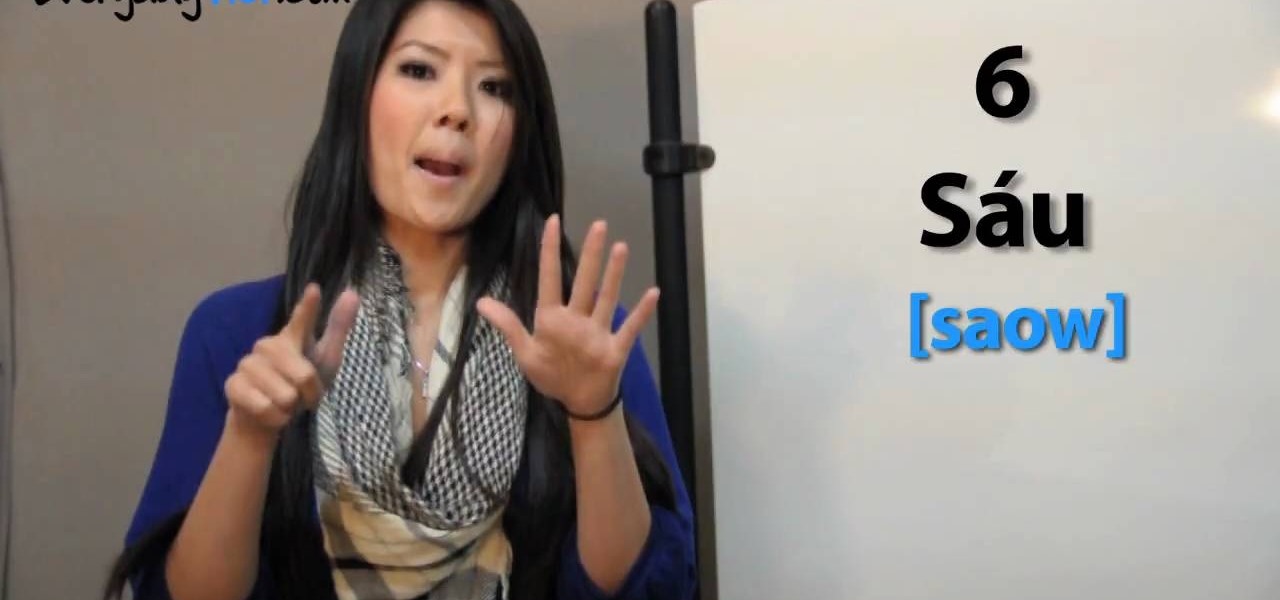
How To: Count from 1 to 10 in Vietnamese
In this tutorial we learn how to say number 1 to 10 in Vietnamese. When you learn how to say this, make sure you have the accent down right or understand how to read the language. M™t = One, Hai = Two, Ba = Three, Bon = Four, Nam = Five, Sau = Six, Bay = Seven, Tam = Eight, Chin = Nine, and Muoi = Ten. Listen to the video so you can hear how to properly say each of the words. These are pretty simple and basic, so you shouldn't have any problem saying them at all. Enjoy learning this beautiful...
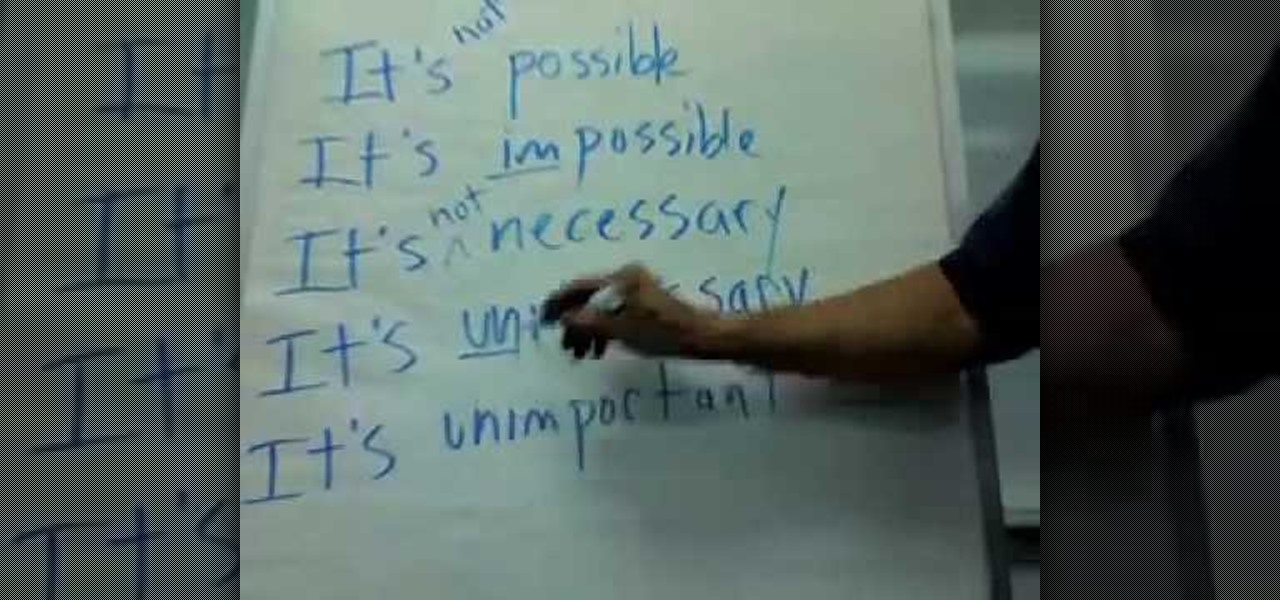
How To: Use "It's + adjective + infinitive" in English
In this video, we learn how to use "It's + adjective + infinitive" in English. To form these sentences, you will use the pattern that is stated above. This is very common in the English language, and you can put whatever you want into the sentence as the infinitive. You can change this from "it's hard to do" to It's not hard to do" to "it's easy to do". You can also make something negative, by giving it the prefix "im", which would change "possible" to "impossible". You can also ad in "un" to...
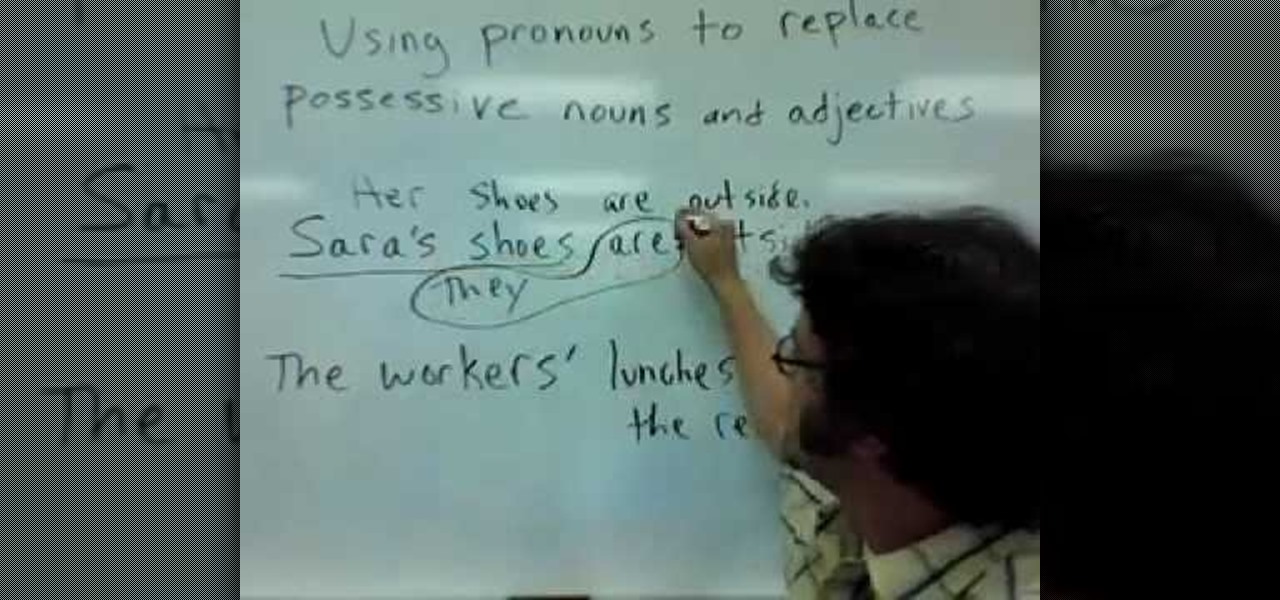
How To: Replace possessive nouns and adjectives with pronoun
In this video, we learn how to replace possessive nouns and adjectives with pronouns. Using pronouns to replace possessive nouns and adjectives is simple, an example includes: Joe's car is dirty, would change to, his car is dirty, or it is dirty. Another example of this is "Sara's shoes are outside" would be "her shoes are outside", or "they are outside". "The workers' lunches are in the refrigerator", would be "their lunches are in the refrigerator", or "they are in the refrigerator". Practi...

How To: Pronounce the alphabet correctly when spelling
Trying to learn the English language? Then it's vital to start with the basics: the alphabet. Learning larger words won't be difficult once you understand how each letter of the alphabet is pronounced.

How To: Count from 10 to 100 in French
Watch to learn how to count by tens from 10 to 100 in French. dix - ten
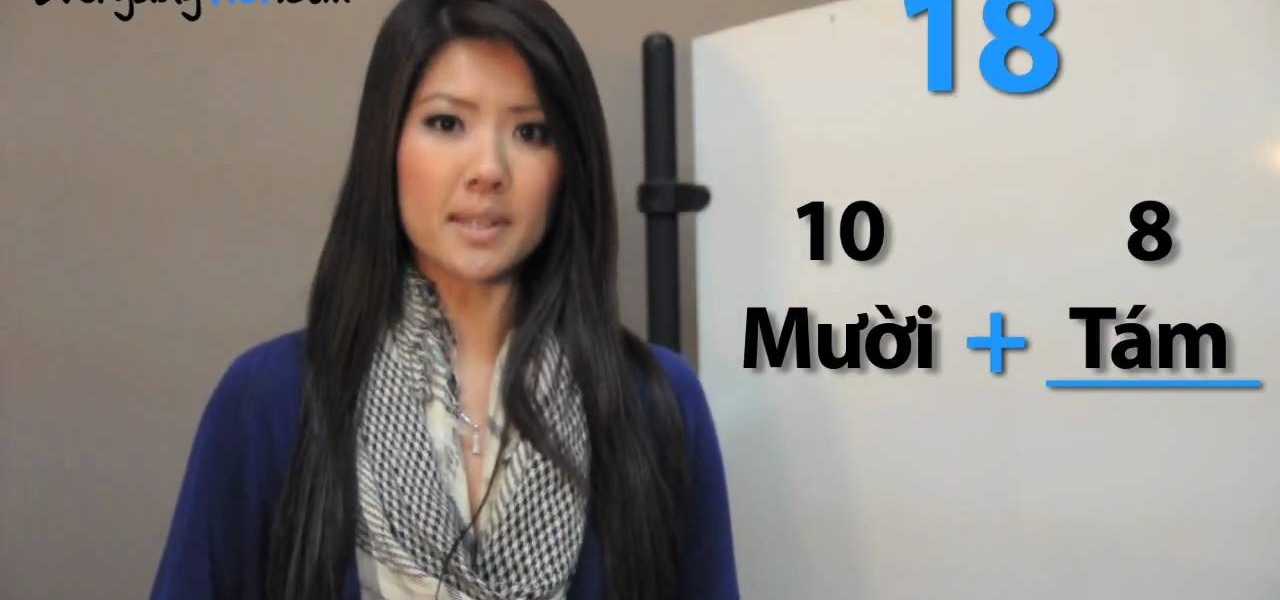
How To: Say numbers 11 to 99 in Vietnamese
In this language video tutorial you will learn how to say numbers 11 to 99 in Vietnamese. For the numbers from 11 to 19, you simply add the number to the word for 10, that is, Muoi. For example, 14 will be Muoi Bon (Bon = 4) and 18 will be Muoi Tam (Tam = 8). For multiples of 10, simply add Muoi after the number. For example, 20 will be Hai Muoi (Hai = 2), 30 will be Ba Muoi (Ba =3), 40 is Bon Muoi and so on. For all other numbers, simply add the number after the multiple of 10. For example, ...

How To: Say 'My Name Is' in Perfect French ('Je M'appelle')
Pronunciation is key to learning any new language. Before diving into the vocabulary and basic phrases, a good approach is to listen and try and get your aural perception honed in. A new word or phrase, like "je m'appelle" in French, is awesome to learn, but it's important to learn it correctly: that starts and ends with pronunciation.

How To: Count from 40 to 50 in French
Watch to learn how to say the numbers from forty to fifty in French. quarante - forty

How To: Count from 20 to 30 in French
Watch to learn how to say the numbers from twenty to thirty in French. vingt - twenty

How To: Speak English smoothly using the marble technique
Destroy filler words, overcome stuttering, speak smoothly, improve enunciation, and get better at public speaking all around with just marbles and your mouth! This video is best for people learning to reduce stuttering or students learning English as a second language (ESL).

How To: Pronounce the soft "i" and a hard "e" in English
Many of my students have problems pronouncing the soft i. This ESL how to video explains how your mouth should move for the soft i and the hard e. You'll never say beach when you mean bitch again. Watch this how to video and you'll be speaking proper English in no time.

How To: Say "hello" in Polish
Learn how to say and spell out "hello" in Polish. This is a quick twelve minute video which shows the spelling and says the pronunciation of the word "hello" in the Polish language. This steps and/ or guidelines would show the easiest way to pronounce the word hello in the Polish language. The English word hello is translated as "Czesc‡" in the Polish language. The spelling may look like an easy word to pronounce but in reality, the pronunciation is different from the spelling of this word. T...

How To: Use the passive voice "supposed to" in English
In English, "supposed to" expresses obligation. Someone expects you to do something. It's an unusual form of the passive voice, but it's very important to learn. This ESL tutorial teaches you how to use "supposed to" in English. Watch this grammar how to video and you will be speaking English in no time.

How To: Give a public speech in Chinese
Benny teaches you some greetings and phrases used in public speaking in Mandarin Chinese.

How To: Speak Lebanese Arabic (World Cup Lingo)
Hello guys! This lesson is for all of you Football fans out there. I will be talking with my friend Chantal about the World Cup and teaching Lebanese sentences that revolve around it.

How To: Toast and say "to your health" in French
It's hard enough to get through the holidays without strangling your relatives. It's even harder when you and your family don't speak the same language. Get through at least the beginning of your Thanksgiving dinner by checking out this video.

How To: Use the modal verb and continuous form in English
Some modal verbs can be put in front of the continuous form to express some present action that is or isn't happening. To make the past tense for each, use "have been" instead of "be."
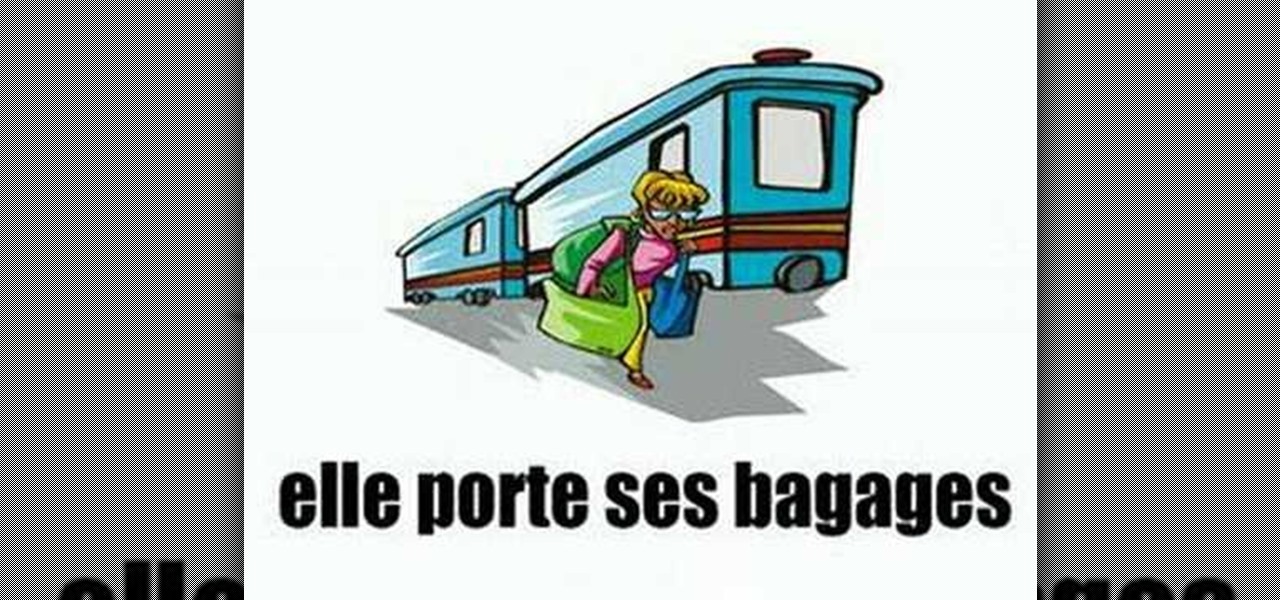
How To: Talk about what you did during your vacation in French
Talk about what you did during your vacation in French (especially if you are going to, or have gone to, France, n'est pas?)

How To: Count from 70 to 80 in French
Watch to learn how to say the numbers from seventy to eighty in French. soixante-dix - seventy

How To: Pronounce and use the "si" in the Polish alphabet
This is a short video for the letter "si". This is one of several videos that go over every letter in the Polish alphabet and every sound of the Polish language. The Polish alphabet are supposed to be the first introduction to this foreign language. It should help to understand how Polish should be pronounced as well as to learn some first Polish words. It should give you the general idea of how the Polish language sounds like.

How To: Use and pronounce "ing" words in the English language
In this episode you will be using and pronouncing words with the word "ing" in the English language. This video is great for advanced, intermediate, and beginner learning to speak the English as a second language (ESL).

How To: Invite someone to dinner in Chinese
Benny teaches you how to invite someone to dinner in Mandarin Chinese.

How To: Use the word "being" correctly in English
Being is a word that can be hard to master for English as a Second Language speakers. It can be used as a gerund, or in present or past continuous tenses.
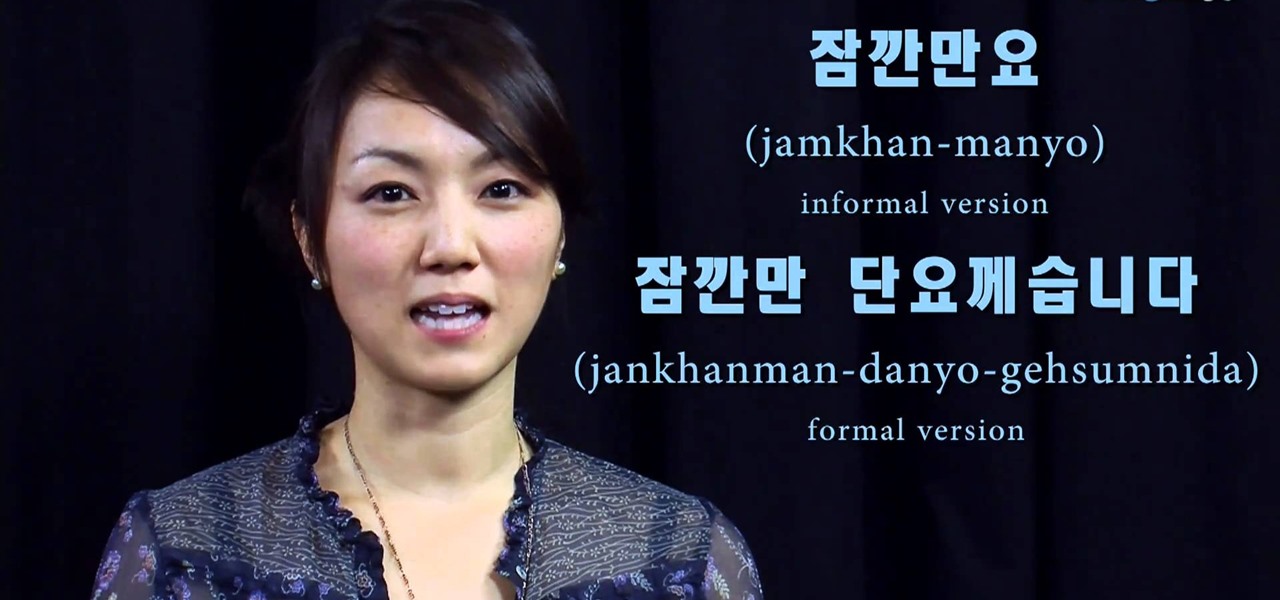
How To: Say and write the words for "I'll be right back" in Korean
In this free video language lesson from Sunny Park of Mahalo, we learn how to say, pronounce and write the Korean words for "I'll be right back." For details, and to get started using this handy Korean phrase yourself, watch this guide for Korean language learners.

How To: Say "hello," "good morning" & "Shanghai" in Shanghai
Shanghai in China has always been the most popular location choice for the World Expo, and this year's Expo is the most expensive in Expo history.
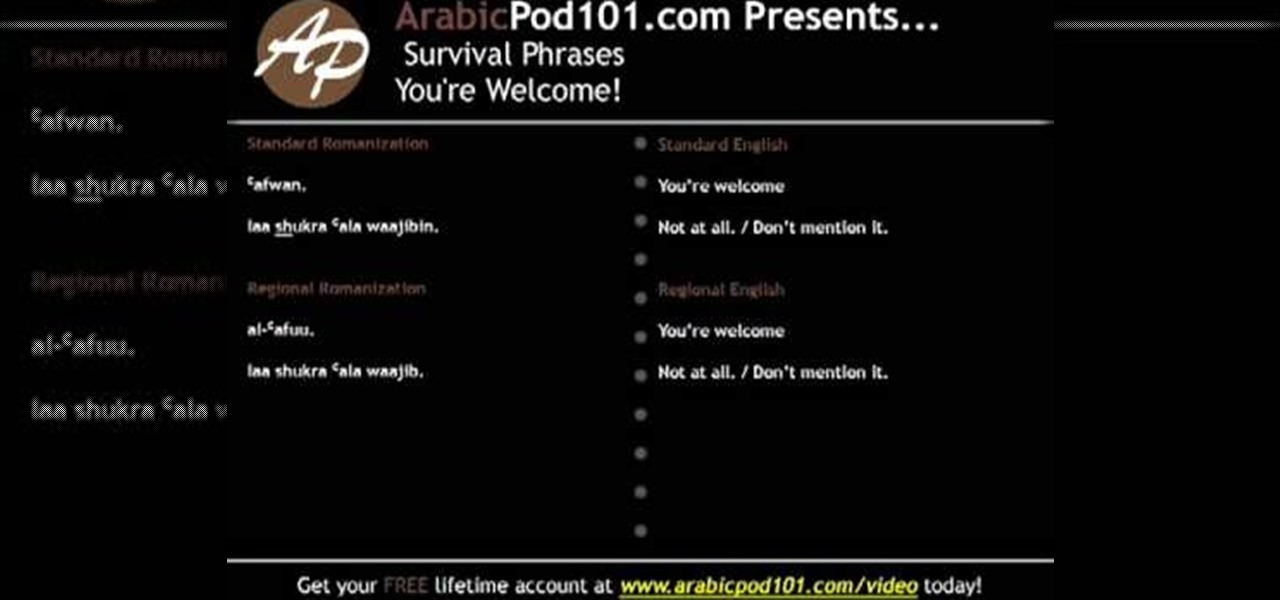
How To: Say "you're welcome" in Arabic
Basic courtesy is important no matter where you go, so if you are off to an Arabic speaking country, this lesson is essential. A little Arabic can go a long way. The second episode in the Survival Phrases series will teach you how to say and understand "You're Welcome" in Arabic. Follow along with the language lessons in these videos and you'll be speaking Arabic in no time.
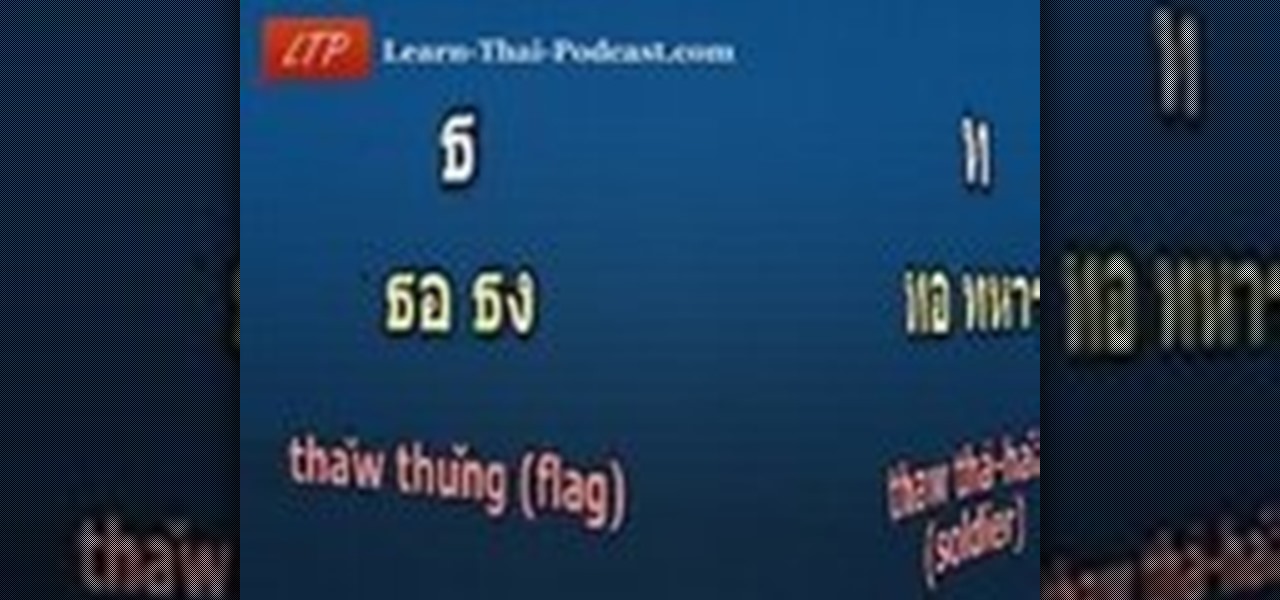
How To: Pronounce the Thai alphabet
Check out this Thai language tutorial that teaches you how to pronounce a few letters of the Thai alphabet. This lesson includes useful phrases and words for traveling in Thailand. Make sure you know these and enjoy the Thai culture, beaches and company of Thai people. Practice your Thai language skills and learn how to pronounce these letters of the Thai alphabet with this instructional language video!

How To: Pronounce regular verbs in the past tense in English
This video shows to pronounce regular verbs in the past tense in English.

How To: Count to 10 in French
Watch to learn how to say the numbers from 1 to 10 in French. un - one
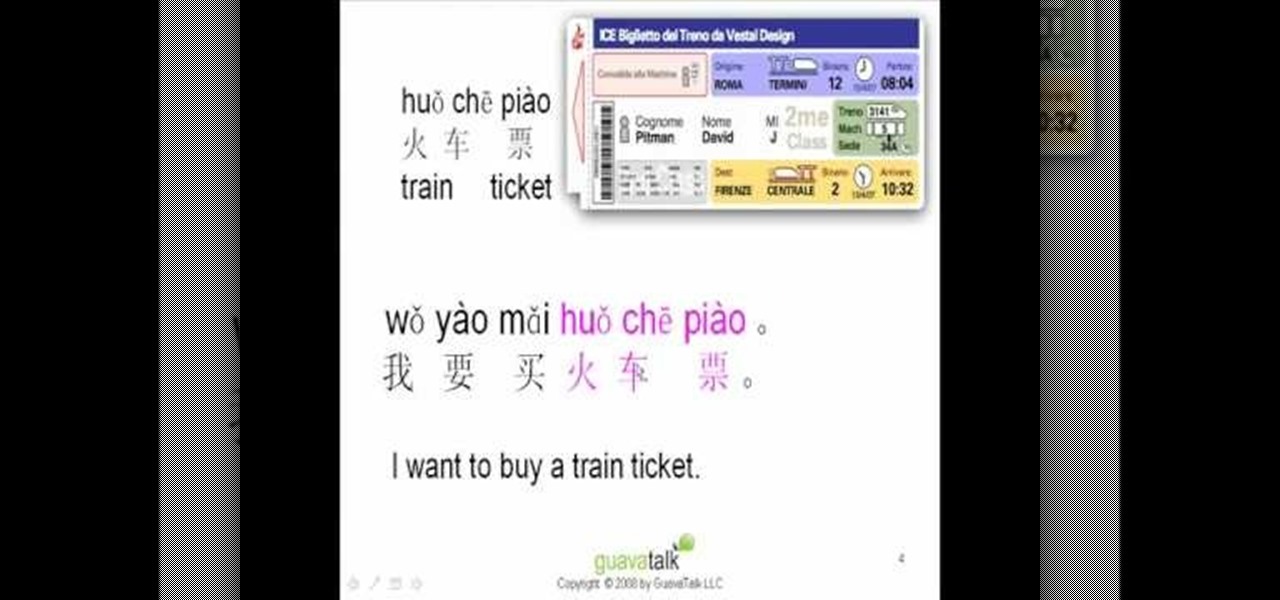
How To: Say "I want to buy" in Chinese
When you have found what you want to buy something in China, you need to know how to communicate your intention.

How To: Pronounce "eil," "euil," and "ueil" in French
Watch to learn how to pronounce French words with the vowel combinations "eil," "euil," and "ueil" in them.

How To: Read Hiragana Japanese characters
Learn how to recognize some basic Hiragana Japanese characters and the sounds they represent, as well as some very common phrases and how they're written.

How To: Use the slash punctuation mark
Here is a useful guide to using the slash punctuation mark. Make sure you know where to appropriately place this punctuation mark, and use your slashes properly in your English writing. Use the slash punctuation mark.

How To: Say "thank you" & "you're welcome" in Vietnamese
In this video, we learn how to say "thank you" & "you're welcome" in Vietnamese. To say "thank you" you will say "C‡m _n". To say "thank you very much" you will say "C‡m _n R_t Nhi_u". To say "you're welcome" you will say "Kh™ng C— Chi". To say "no problem" you would say "Kh™ng Sao". Remember these phrases when you are in different scenarios, whether you're in the grocery store or you're in the street. Listen to the speaker in the video to better understand how each of the words are spoken an...

How To: Write and say the Korean words for "I am going to work"
In this free video language lesson from Sunny Park of Mahalo, we learn how to say, pronounce and write the Korean words for "I'm going to work." For details, and to get started using this handy Korean phrase yourself, watch this guide for Korean language learners.

How To: Pronounce the Arabic letters Kaf and Qaf correctly
Perfect your pronunciation of Arabic words! This video covers two letters in the Arabic alphabet, Kaf and Qaf. This video details the difference and variations unique to each letter, as well as covering how to get the proper accent.

How To: Use romantic phrases in Brazilian Portuguese
In this tutorial, we learn how to use romantic phrases in Brazilian Portuguese. These are common phrases that anyone can learn, and can help you in everyday Brazilian Portuguese speech. When you are wanting to compliment someone or tell them something romantic, you can say a number of different things. The word "lu" is another word for love, so you could use this my saying "mi lu, linda" which would be "my love, Linda". To say "you are very pretty/cute" you would say "voce e muito linda". To ...
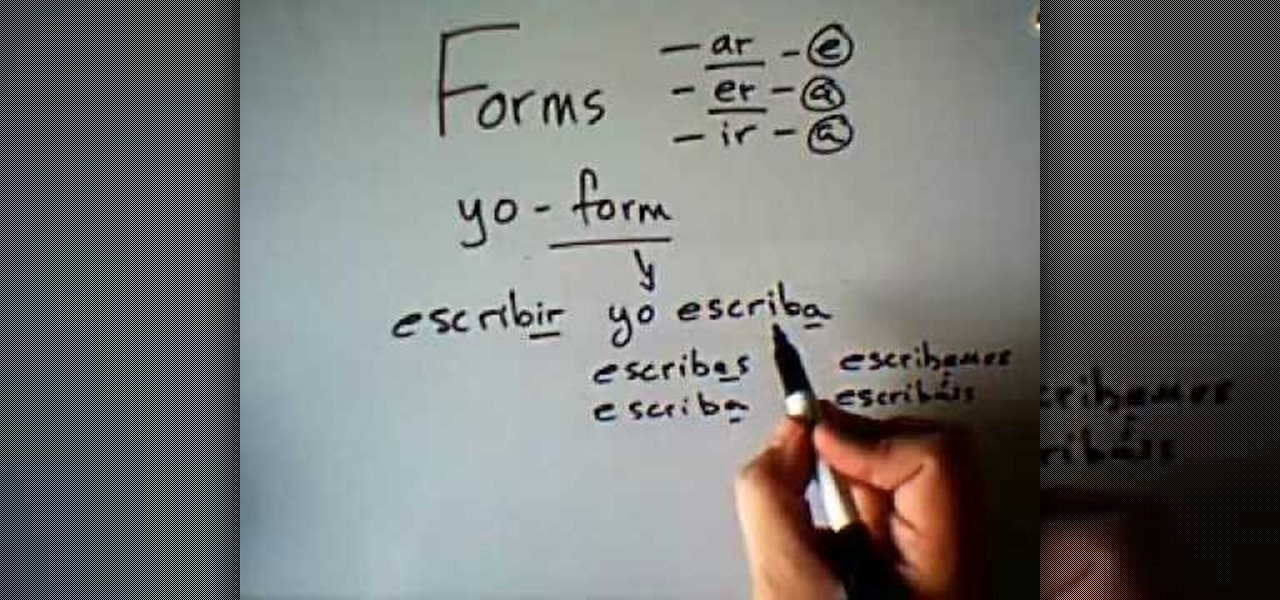
How To: Use the subjunctive with verbs of volition in Spanish
In this video, we learn how to speak Spanish: Subjunctive with verbs of volition. Volition is requests when someone asks, needs, or wants something. To form these, you must first take the "yo" form and remove the final "o". Then, you will add in the opposite vowel endings. For example, with "yo hablo" you would say, "yo hable" or "hables". This will change if you are talking about a group of people, one person, or a formal group of people. A verb with the "er" ending will change to "a" or "es...

How To: Use Japanese expressions for "lazy"
In this video, we learn how to use Japanese expressions for "lazy". This is difficult to translate for most people, because of how it's expressed and said. Mendo-Kusai is expressing something you don't feel like doing. This is something that takes too much effort, and you can take this to someone casually or with your friends. An example is if you don't feel like doing your homework, or you don't want to walk all the way around a grocery store. This basically means you are being lazy and don'...





